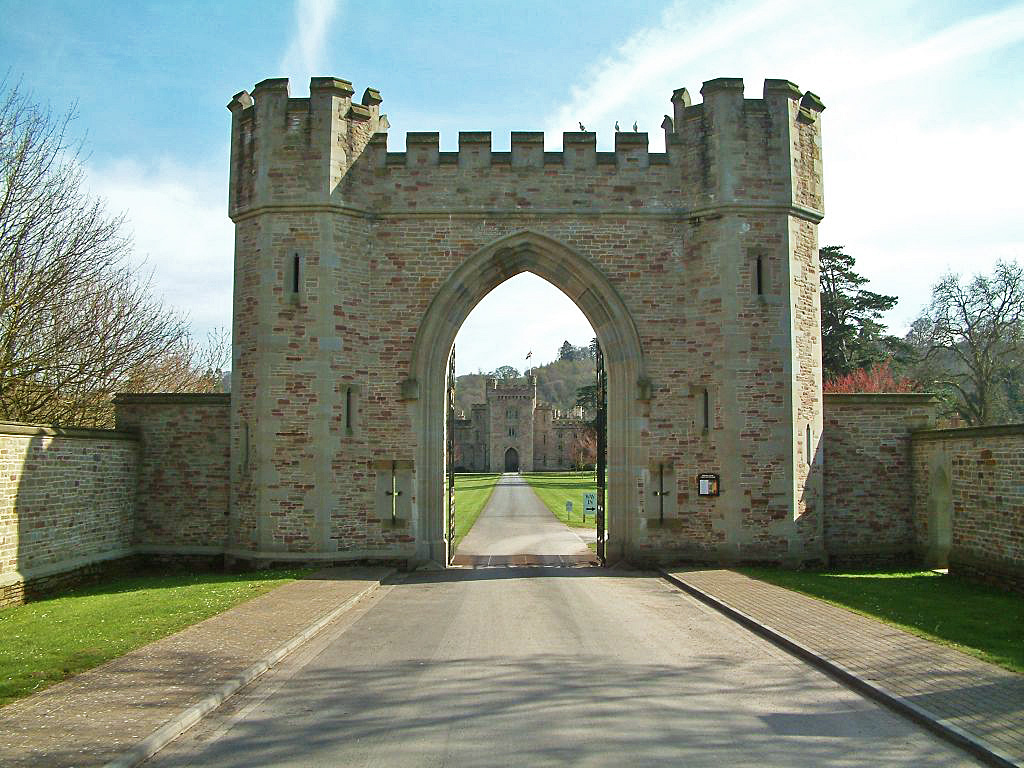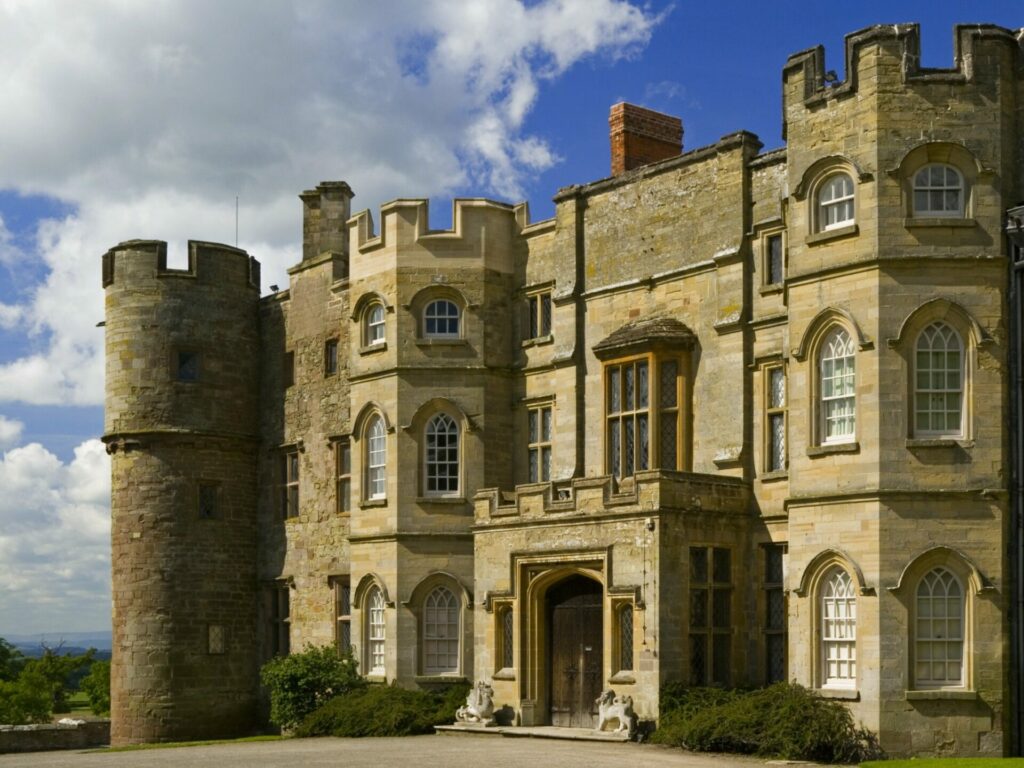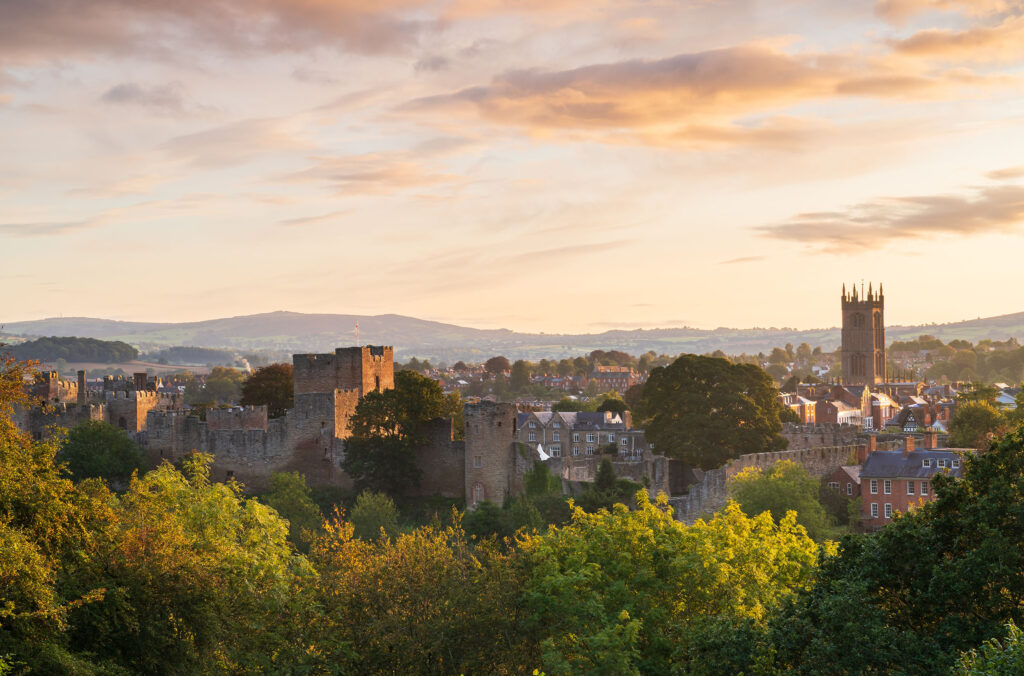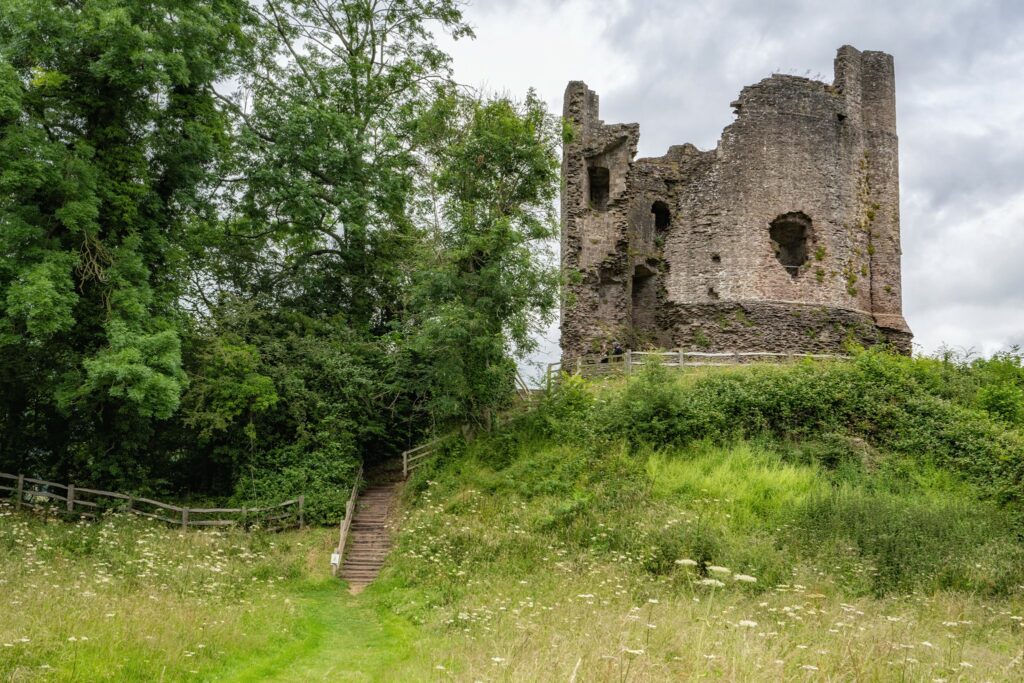Castles in Herefordshire & Shropshire
From Disney-looking frontages, evocative ruins and Gothic revivals, we’re an area rich in castles.
Herefordshire and Shropshire sit right in the heart of the strategically important Welsh Marches. This buffer zone once separated England and Wales, and at one time boasted more castles than many other parts of England. Today some survive almost intact, others stand as evocative ruins – but all deserve a visit.

Fun fact: Hampton Court Castle isn’t technically a castle. It’s a fortified manor house, but it looks exactly how you imagine a castle should.
Hampton Court’s story starts in 1427 and swings between highs and lows. Owners changed repeatedly. In the 1800s Richard Arkwright’s son (also called Richard) took over and gave the façade a Neo-Gothic makeover still visible today. The property went from WWI military convalescent hospital to crumbling ruin in the 1960s. Now it thrives as a fully restored tourist attraction and wedding venue.
Visitors can explore the Great Hall, the Chapel and other restored rooms. The gardens wow too – a walled kitchen garden, a Yew Tree Maze with Gothic tower, river walk, sunken garden, waterfall and a ha-ha wall with sweeping countryside views. Don’t miss the 170-year-old Wisteria Arch in full bloom.
Hampton Court remains in private hands, so check the website for opening times.
Pearl Lake 28 mins · Arrow Bank 19 mins · Rockbridge 36 mins

The Croft family owned Croft Castle from the 11th century and the National Trust runs it today. Bernard de Croft, a Norman knight, built the original stronghold around 1085. Over the centuries, owners altered the façade repeatedly. The castle’s current look, with four round towers and an internal quadrangle, dates from the late 1600s.
Finances often forced the Crofts to sell. By the 1950s Croft Castle faced demolition, but Diana Croft stepped in and handed it to the National Trust in 1957.
Now Grade I listed, Croft Castle welcomes visitors to its beautifully restored rooms. Outside you can roam 1,500 acres of historic parkland and farmland, a secret garden, and a kitchen garden with a working vineyard. Perfect for a full day out.
Pearl Lake 11 mins · Arrow Bank 15 mins · Rockbridge 22 mins

Ludlow Castle ranks among England’s most significant medieval fortresses. It towers above the town with stunning Shropshire countryside views. Walter de Lacy began building it in the late 11th century to pacify the Welsh Marches. Successive owners enlarged and fortified it. During the English Civil War, Royalists held Ludlow until their surrender, after which the castle declined.
In the 1760s the government considered demolishing Ludlow Castle but instead leased it to the Earl of Powis. It became an early tourist attraction and today the Powis Castle Estate owns it. Conservation projects continue on site.
The castle hosts Ludlow Festival’s open-air Shakespeare performances and the famous Ludlow Food Festival within its walls.
Pearl Lake 25 mins · Arrow Bank 29 mins · Rockbridge 36 mins
Although in North Herefordshire, Wigmore Castle’s position near the Shropshire and Welsh borders gave it huge strategic value. Its history spans more than 900 years, but now only romantic ruins remain. Many historians still call it one of England’s most remarkable castles.
After the Norman Conquest the powerful Mortimer family seized Wigmore as their principal seat. By the late 1400s, as the Welsh threat faded, the castle slid into disrepair. Nature slowly reclaimed it for centuries.
English Heritage began preserving Wigmore in the early 2000s to keep its wild, overgrown character. Today lesser horseshoe bats and rare wildflowers thrive among the ruins. Entry is free but watch out for steep steps and inclines.
Pearl Lake 11 mins · Arrow Bank 16 mins · Rockbridge 22 mins
Like Hampton Court, Eastnor bears the title “castle” but it’s really a grand 19th-century Gothic Revival mansion. Nestled in the foothills of the Malvern Hills near Ledbury, the 1st Earl of Somers built Eastnor between 1811 and 1820 to mimic a medieval fortress with battlements, towers and a keep. Augustus Pugin, leader of the Gothic Revival movement, designed the interiors.
The Hervey-Bathurst family, descendants of the original owners, still live at Eastnor. Check the website for opening times.
Inside you’ll find opulent rooms filled with period furniture, especially the spectacular Gothic Drawing Room. Outside the 5,000-acre estate includes a deer park, maze, arboretum and lake with stunning Malvern Hill backdrops.
Pearl Lake 54 mins · Arrow Bank 50 mins · Rockbridge 65 mins

Longtown Castle, in the village of Longtown, is a classic Norman motte-and-bailey fortress. Built first of timber and rebuilt in stone in the mid-12th century, it defended the turbulent Welsh borderlands throughout the 13th and 14th centuries. By the late Middle Ages its fortunes changed: owners deliberately damaged it to stop anyone re-using it, and locals recycled its stones for other buildings.
Now English Heritage manages Longtown Castle. Visitors can clearly see the round keep facing the Black Mountains and trace the earthworks that reveal its former size. Entry is free but check the English Heritage site for opening times.
Pearl Lake 58 mins · Arrow Bank 53 mins · Rockbridge 60 mins

Apr 2024
Incredible woman fighting terminal cancer, continues to raise funds & awareness As a lot of our owners on Pearl Lake...
Read more
Jan 2024
Compton Care near Wolverhampton is to benefit from a £1,000 donation, thanks to being nominated by holiday homeowners from a...
Read more
Oct 2025
October, at the tail end of harvesting, is a busy time in Herefordshire for events that are rooted in the...
Read more